The Niukawakami Shrines of Southern Nara Prefecture
2022/09/20
In southern mountains of Nara Prefecture are 3 shrines that share the same name, but are separated by kilometers of land and significant elevation differences. These are the Niukawakami Shrines (丹生川上神社), built to give humans some agency in controlling the most vital resource for farming: water.
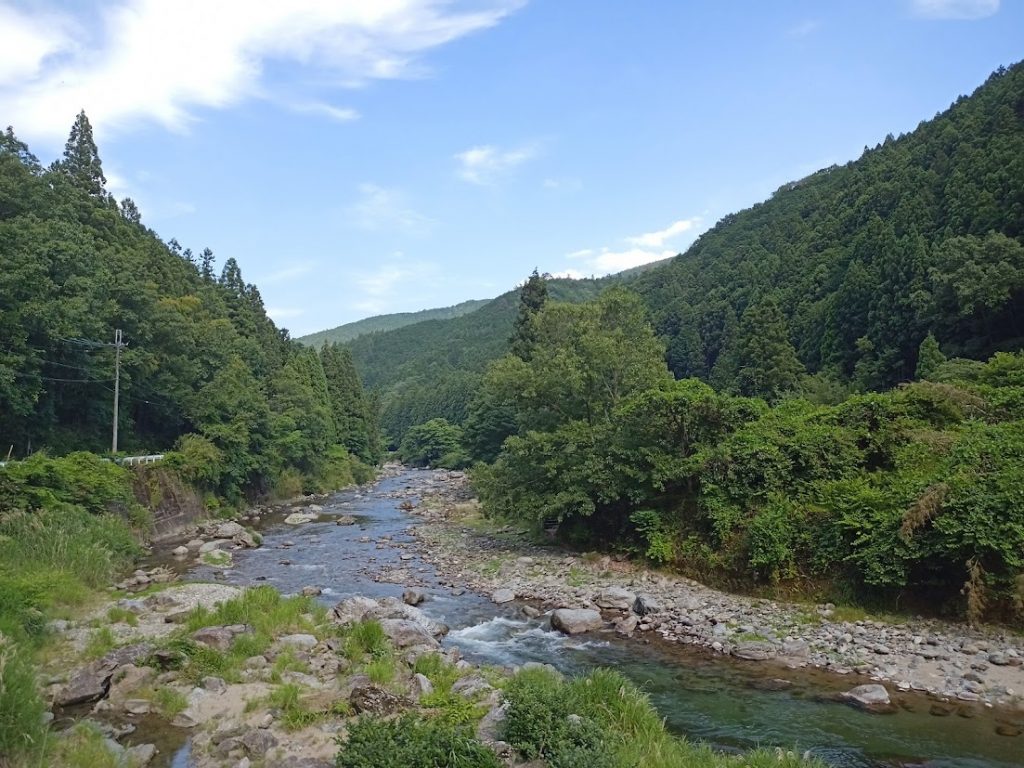
Takami River, Higashiyoshino VIllage.
Shinto Shrines in Japan are built to enshrine the countless deities (known as “kami”) that are believed to inhabit the archipelago, and who have influence over various aspects/concepts of existence, from bodily health to agriculture. There have been many methods of praying at shrines throughout history, but in modern times is quite common to donate goods and, including sake and food, in order to keep the kami content and using their powers in a way that is helpful for the human world.
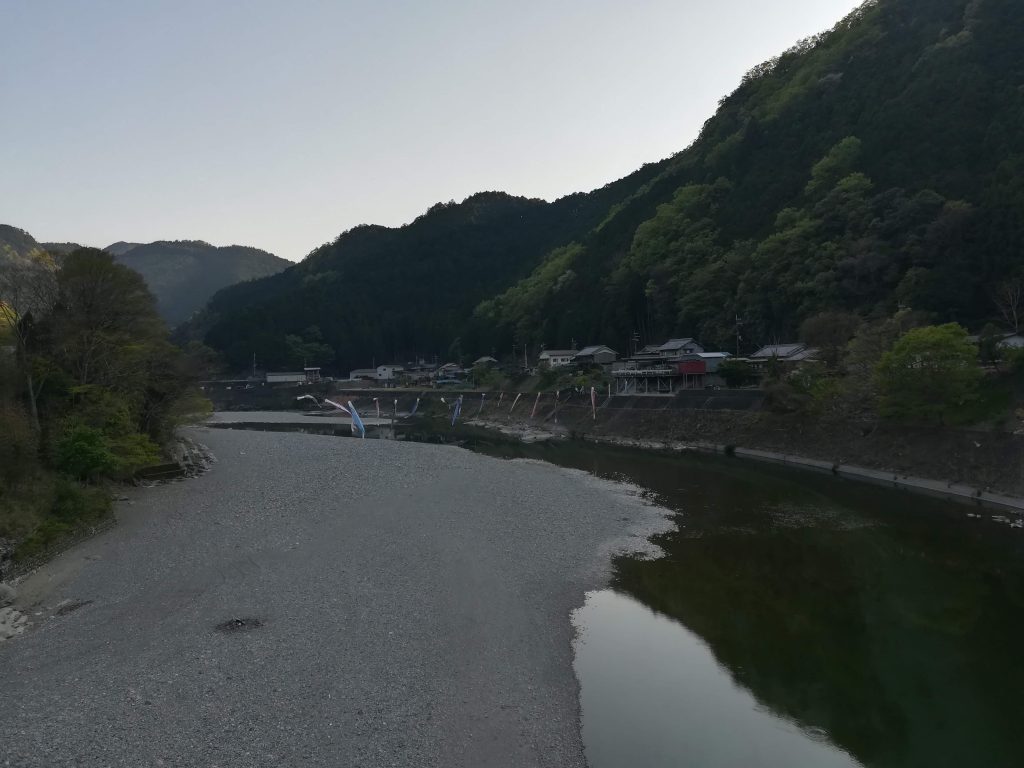
The Niukawakami Shrines of Nara are much the same, with records of a shrine of that name first being established in Nara in the year 675 CE under Emperor Tenmu to venerate the Mizuhanome-no-kami, a goddess who controls the flow of water from the mountains into the farming areas below. In past times, rulers demonstrated their right to rule through harmony with the forces of nature, with one central role of importance being to ensure good weather for successful crops.
The Niukawamaki Shrines, of which there are now 3 in the mountains of southern Nara, served the purpose of praying for favorable weather. The traditional method of seeking the kami’s favor at these shrines was reportedly to ceremoniously sacrifice a horse; more specifically a black horse to bring rain (representing dark rain clouds), and a white horse (representing white clouds) if they wanted the rain to stop. This is believed to be the ceremony from which the now ubiquitous ema (絵馬) prayer placard originated — the word “ema” literally translates as “horse picture” (絵 = picture 馬 = horse) and is usually made from a narrow slice of wood, features a local design, and contains a space for writing one’s prayer on the front.
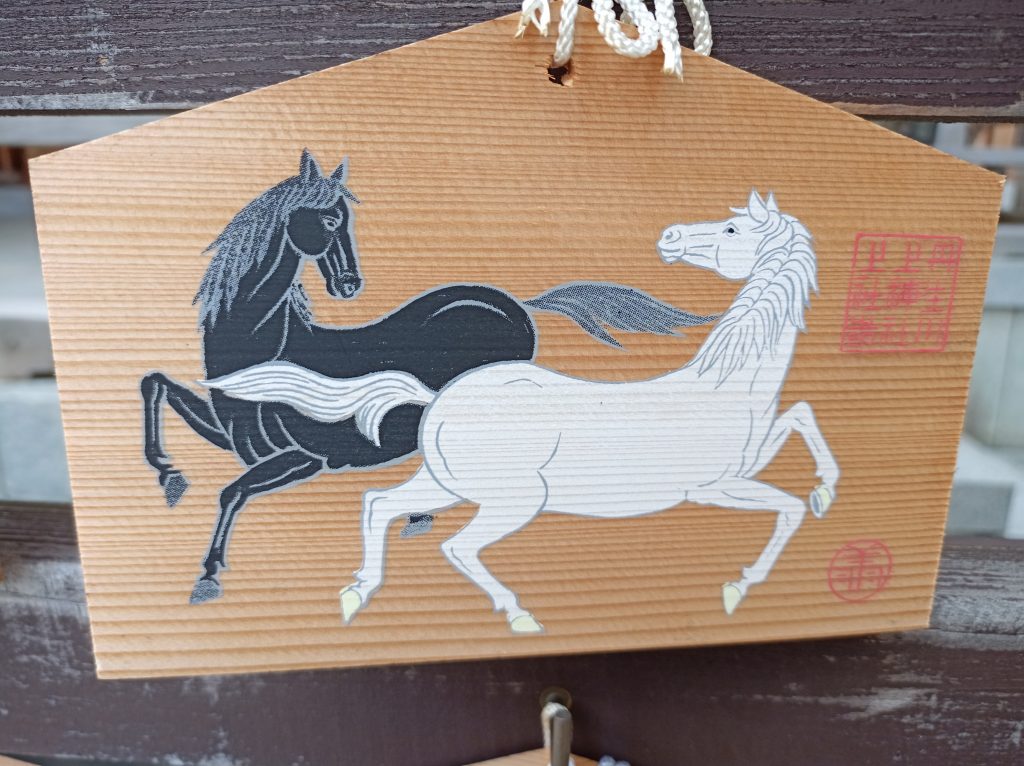
Ema from the Niukawakami Upper Shrine
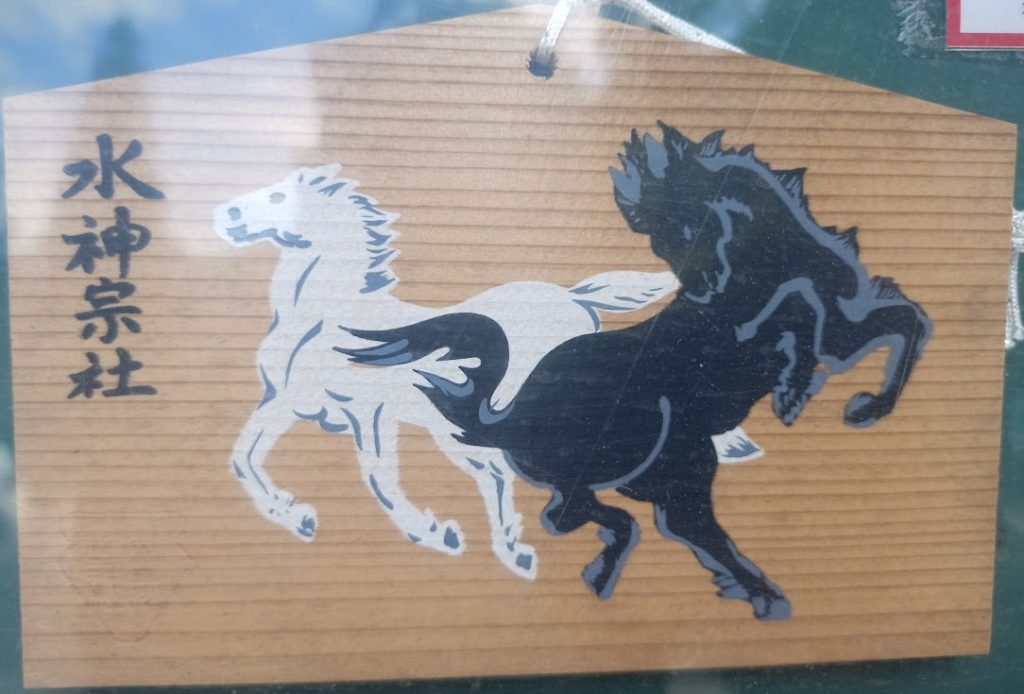
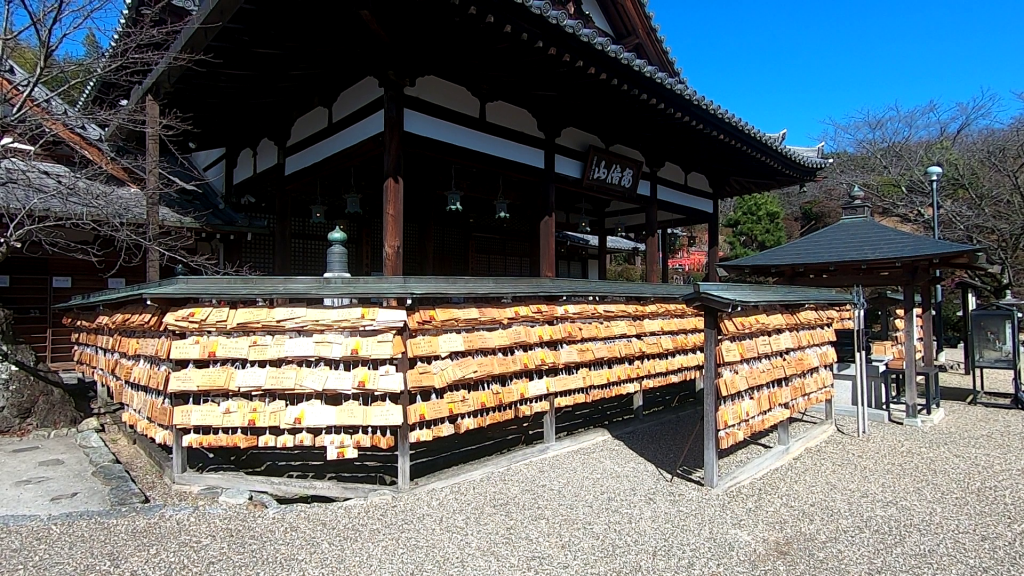
Abe Monju-in Temple in Nara’s Sakurai City is a famous location to visit to pray for success in test-taking, which is reflected in the huge amount of ema that can be found here. Anybody can pay a small fee to hang their own ema at a Shinto shrine or Buddhist temple with a prayer for the deity.
The 3 Shrines
The highest shrine (in terms of elevation) is found in the village of Kawakami and is known by the name of Niukawakami-josha (Upper Shrine). This shrine was originally located next to a river, farther down the mountainside, but the decision to construct a nearby dam resulted in the abandonment of a large part of the village, including the shrine itself. So it was relocated to its current mountainside location, which offers amazing views over the surrounding wild landscape.
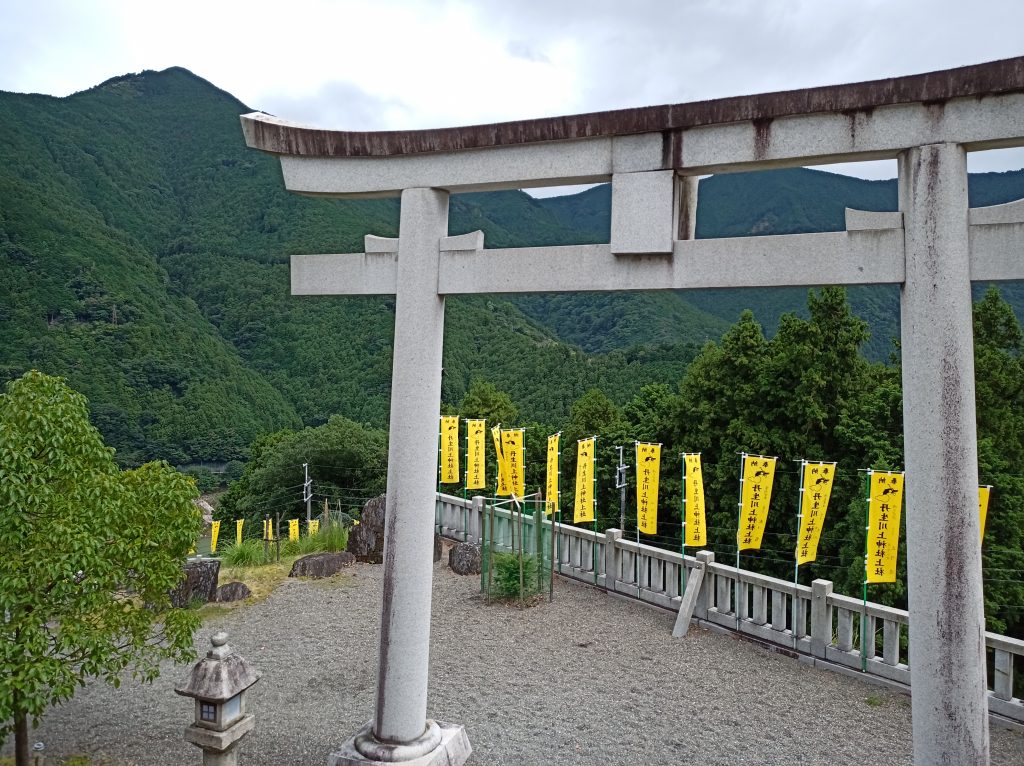
Niukawakami Upper Shrine
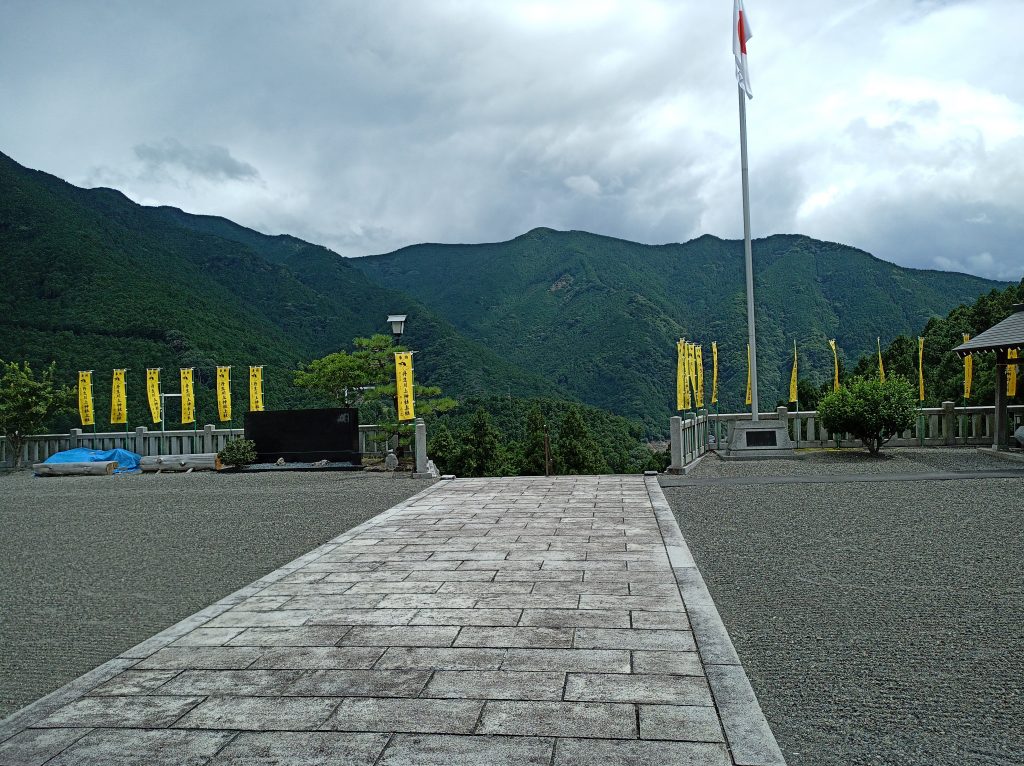
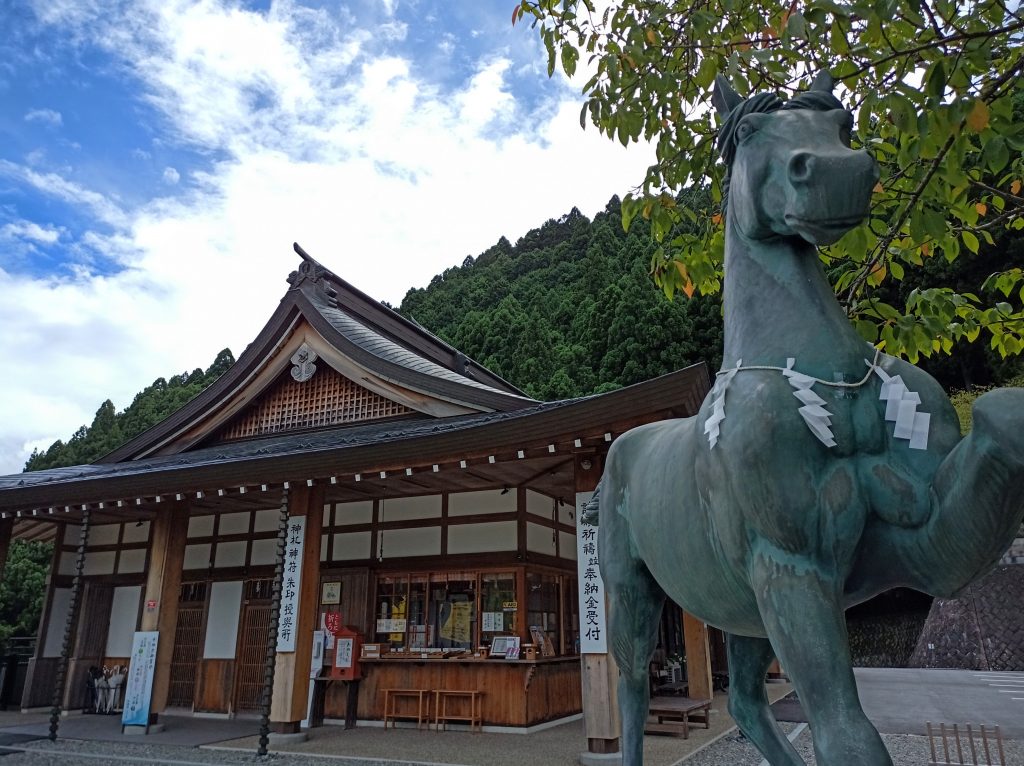
The Middle Shrine (Niukawakami-chusha) is in the village of Higashiyoshino, next to the merging point of 3 beautiful mountain rivers. This location truly feels like it is connected to flowing water, almost as if it was positioned to draw out this sacred resource from the converging mountain valleys and send it on its way down to the farmlands below. In the fall, this riverside location is also famous for beautiful autumn colors, drawing visitors from all throughout Kansai to see the reflection of crimson leaves in the gently flowing Takami River.
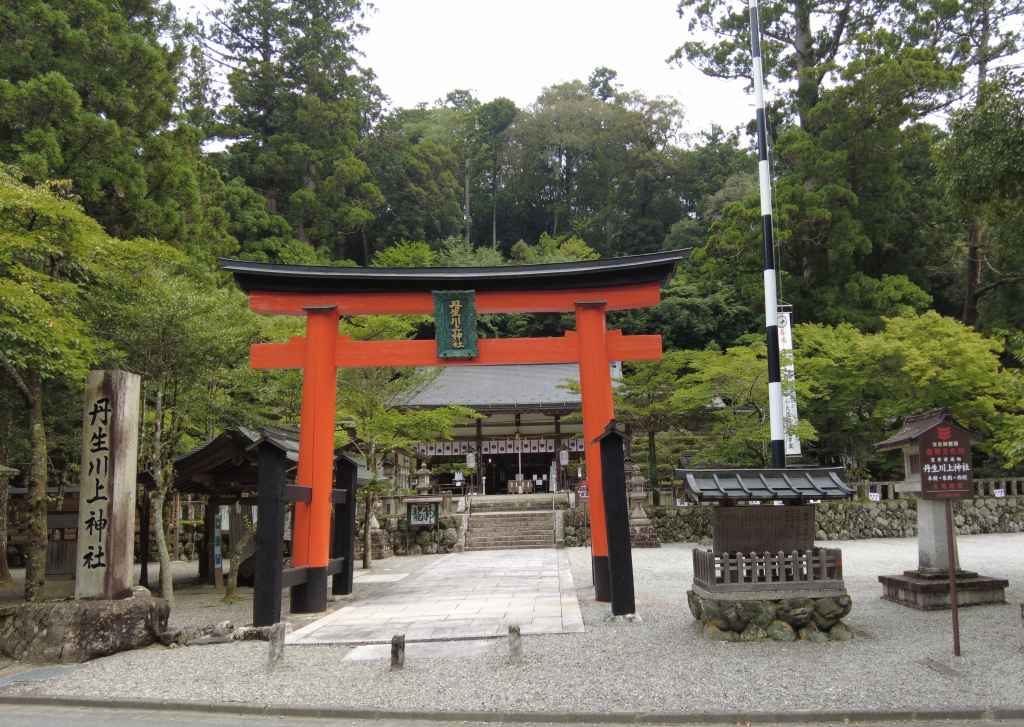
Front of Niukawakami Middle Shrine
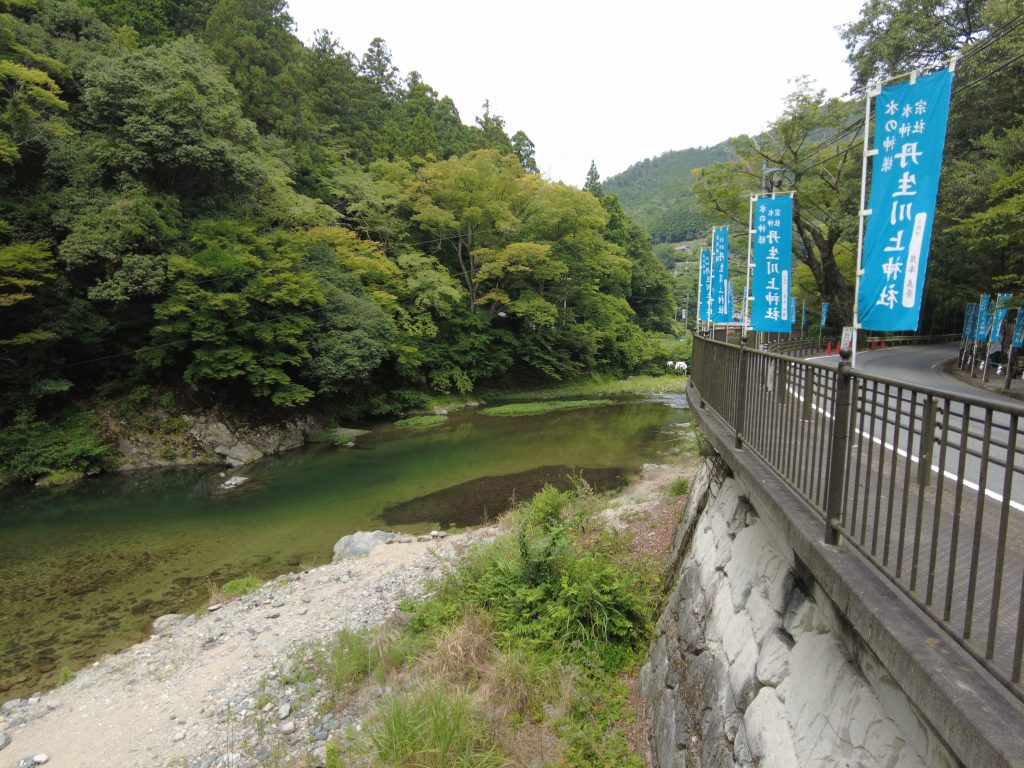
View of Takami River from the Niukawakami Middle Shrine
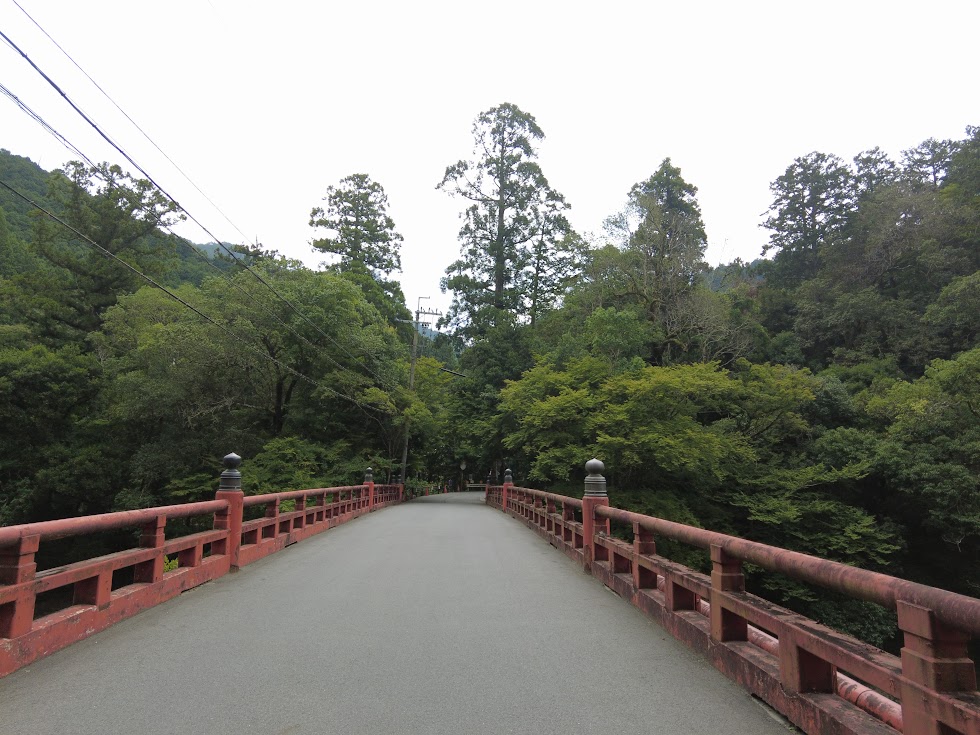
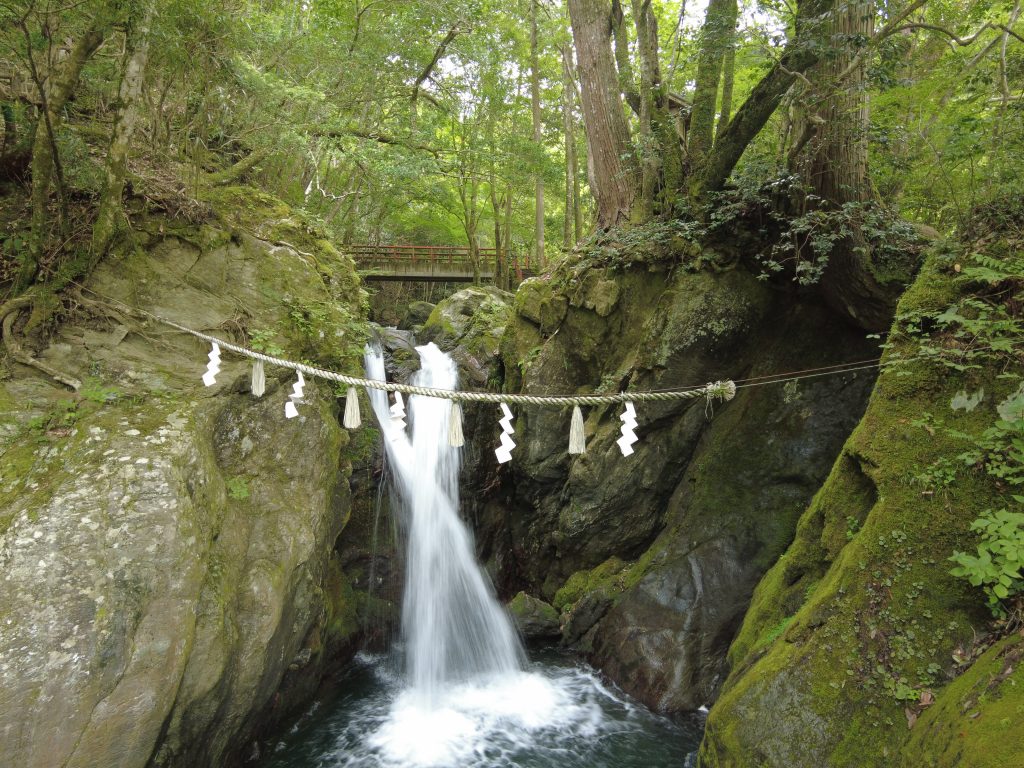
Hingashi-no-taki Waterfall (東の滝), located a bit upriver from the shrine at the merging point of the 3 streams, is also a must see spot if you visit this location.
Finally, there is the Lower Shrine, named Niukawakami-shimosha, (though I’m not sure this is actually the lowest in terms of elevation, considering its in the middle of the mountains), located in the town of Shimoichi, next to the Niu River. This shrine is theorized by some to be the oldest of the Niukawakami Shrines, but nobody knows for sure because the location outlined in old texts is not really clear. This shrine features interesting architecture and actual black and white horses that are kept in a somewhat seemingly small outside pen (I hope they get the chance to get out and roam in a wider area sometimes!). I’ve never seen horses kept on the grounds of a Shinto Shrine before in Japan, so this location definitely is unique in that regard.
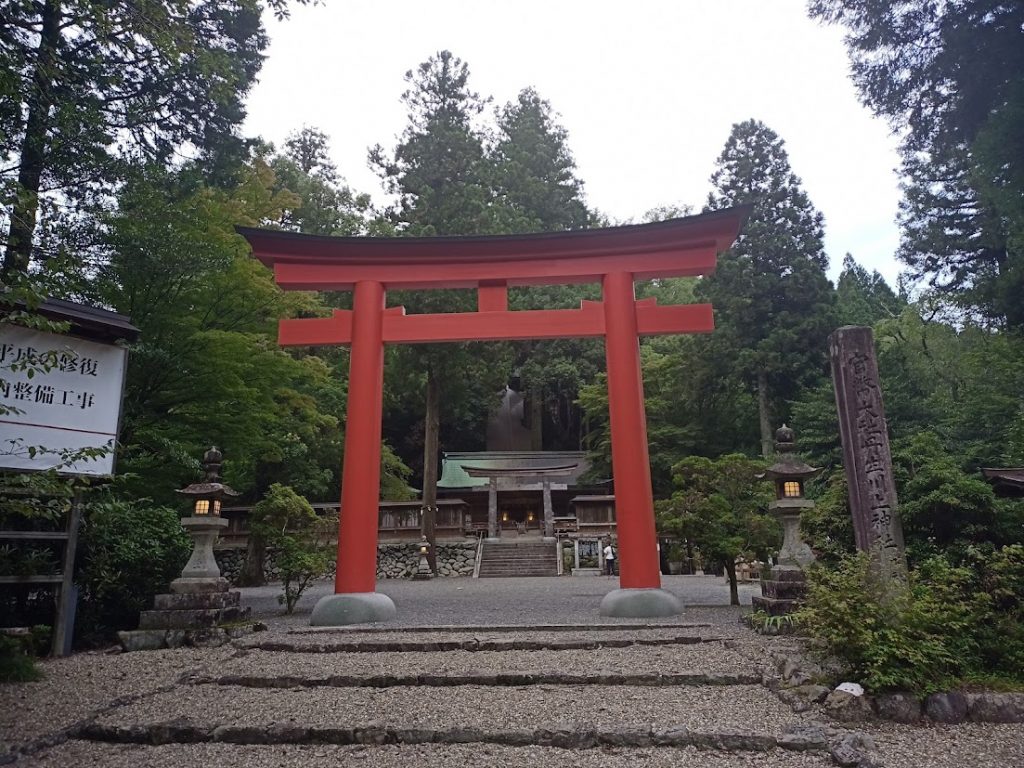
Niukawakami Lower Shrine
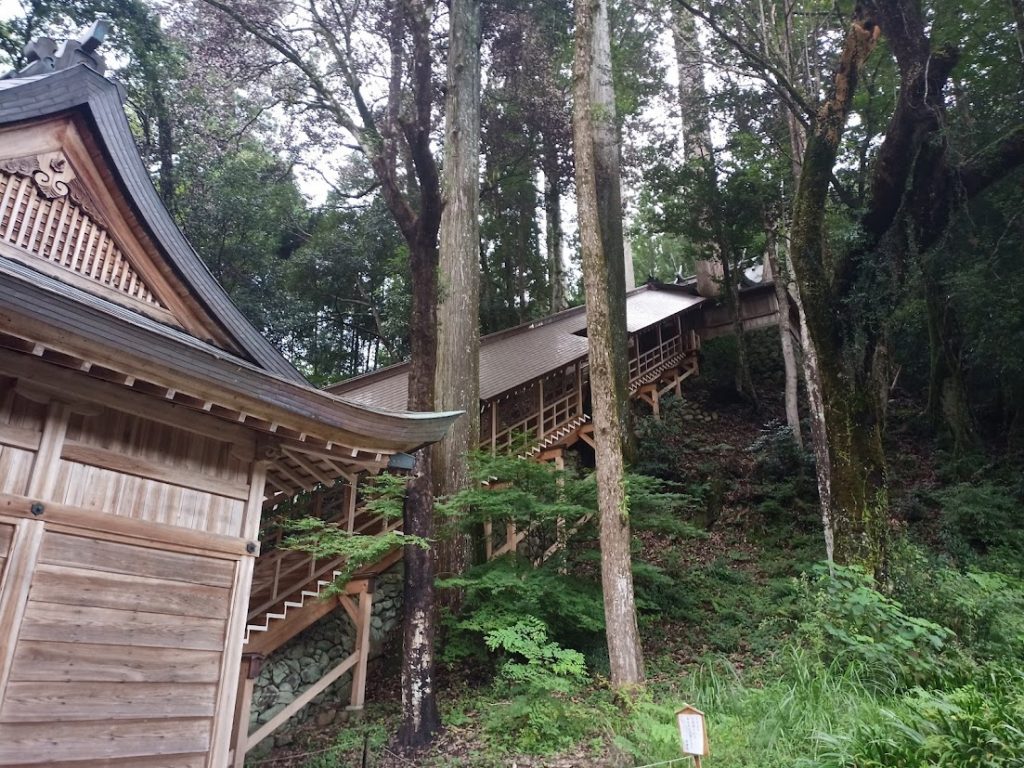
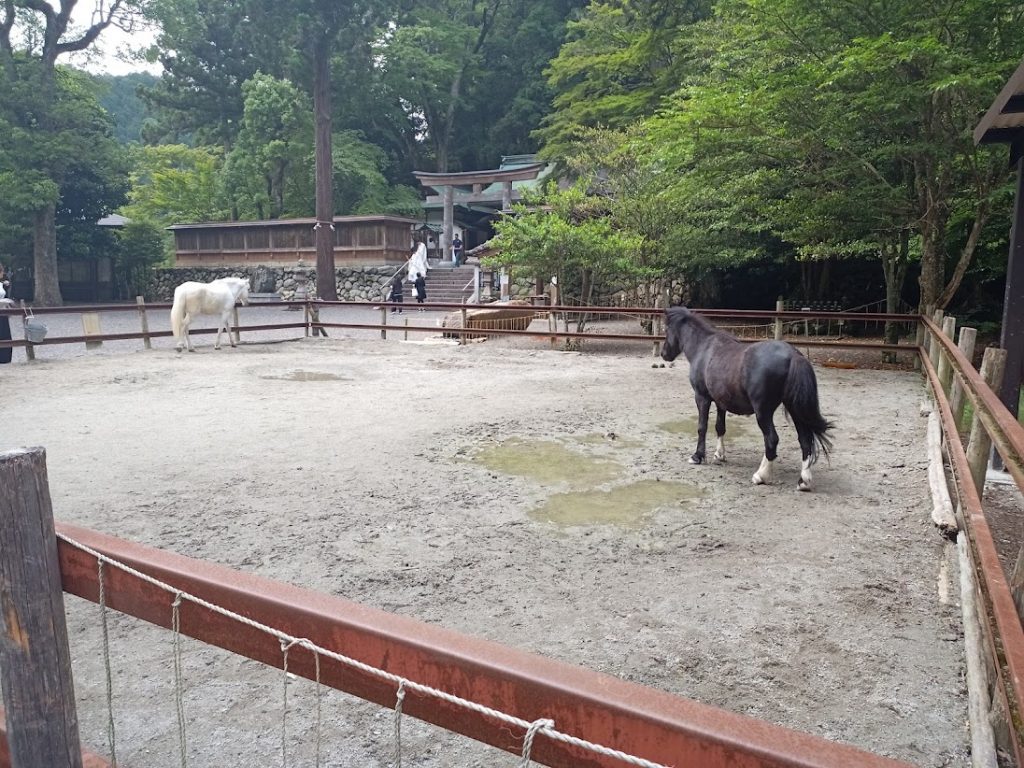
Horses at the Niukawakami Lower Shrine
The countryside surrounding the shrine is also quite noteworthy for its natural beauty, and being located not far from Kurotaki Village’s famous roadside station (similar to a farmer’s market), where one can find a bunch of delicious local treats and hand made crafts for sale.
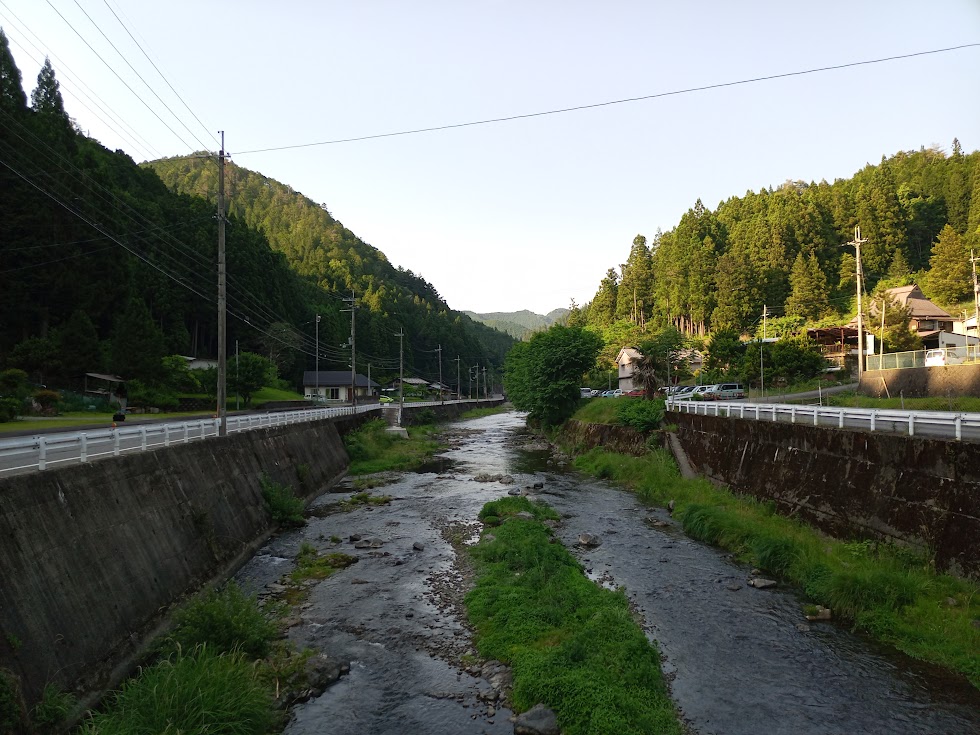
Niu River in Kurotaki Village, located not far from the Niukawakami Lower Shrine
Access:
All 3 of the Niukawakami Shrines take some effort to get out to, with a personal vehicle probably being the easiest method to use. If you are a cyclist, the Middle Shrine is a great destination, especially from the southwest (perhaps starting at Yamato-Kamiichi Station) from which you can follow roads along the Yoshino & Takami Rivers through some beautiful countryside to get there. The Lower Shrine also makes for a great bike ride for those who want a bit more of a challenge.
For more information, please feel to contact us here at Kansai Treasure Travel.

01
FIND YOUR FAVORITE
TRIP ON OUR WEBSITE.
SEND US AN INQUIRY.

02
PERSONALIZE THE TRIP
TO YOUR INTERESTS
WITH OUR CONSULTANT.

03
20% DEPOSIT TO CONFIRM.
BALANCE PRIOR TO ARRIVAL.
PAYMENT BY CC OR TT.

04
WE WILL
MEET YOU
AT THE AIRPORT.

05
DISCOVER THE
TREASURES!